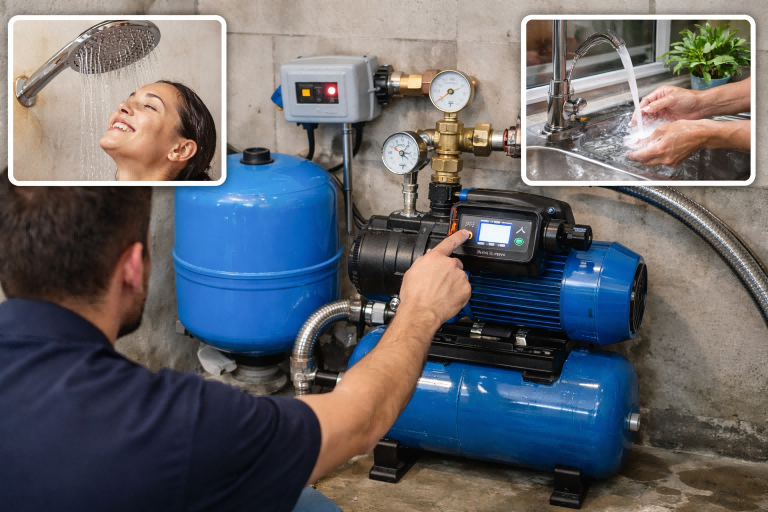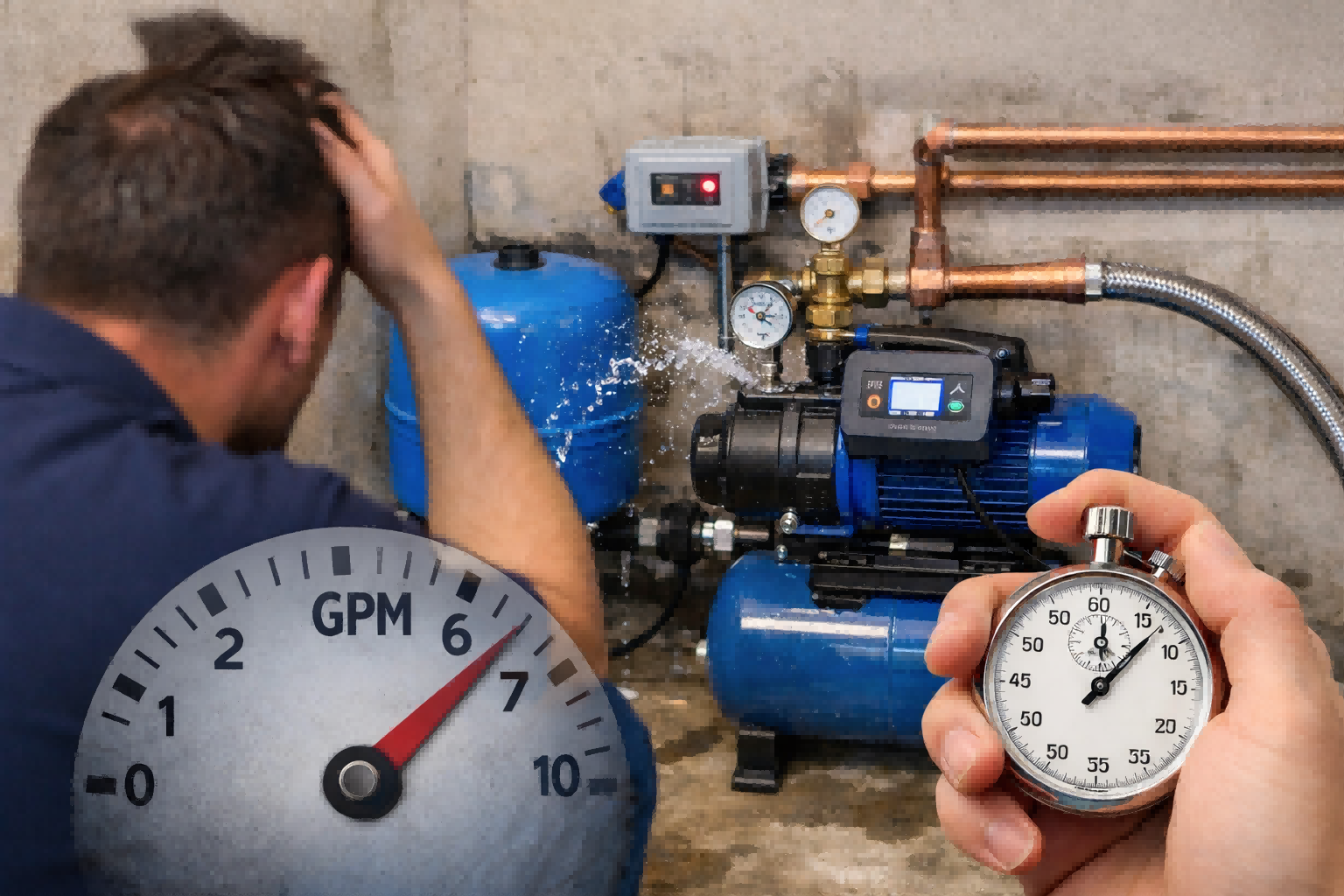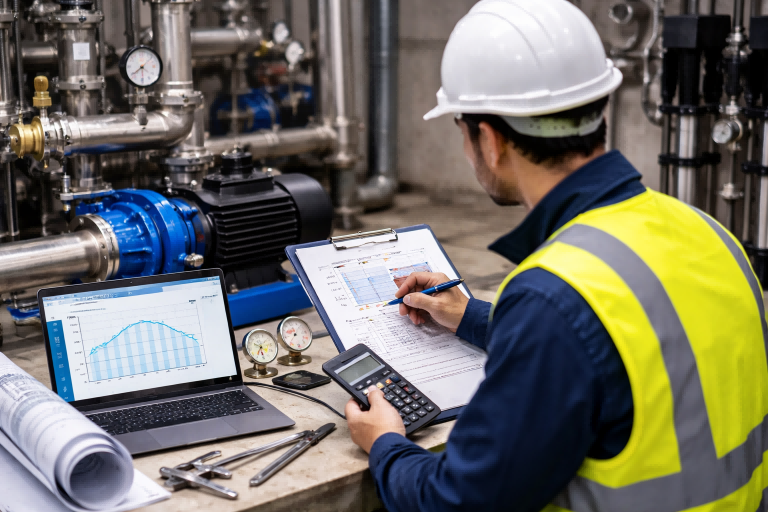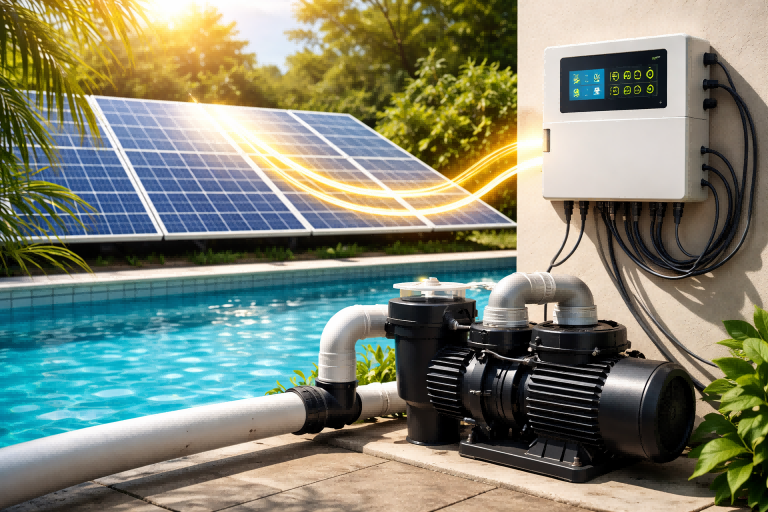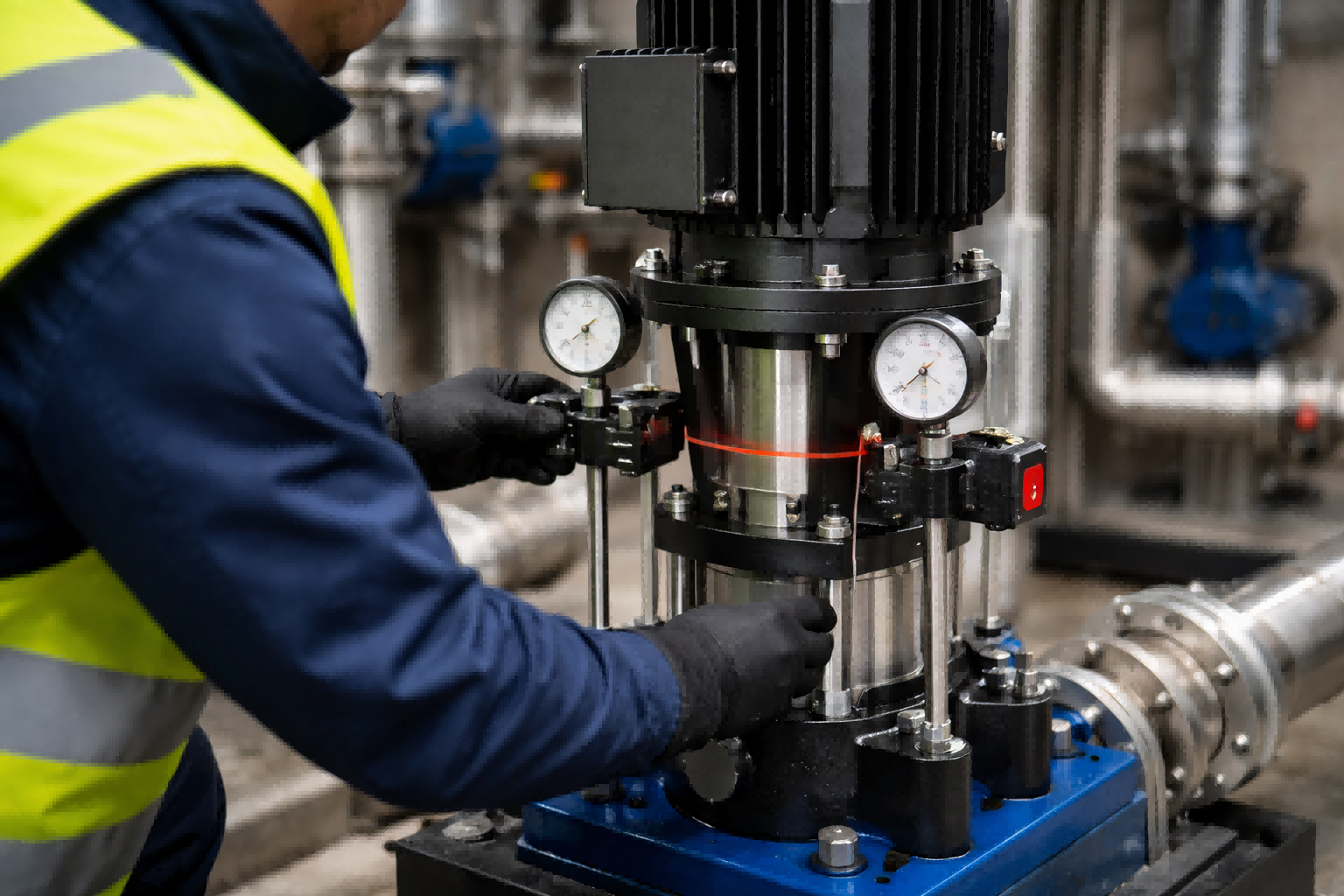Struggling with high operational costs for irrigation?
An unsuitable pump wastes water and energy, directly impacting your profits.
Understanding cost factors helps you choose wisely and boost your bottom line.
A new irrigation pump's cost ranges from $200 for small units to over $20,000 for large industrial models. The final price is shaped by pump type, power (horsepower), flow rate, materials, and advanced features like Variable Speed Drive (VSD) technology, which significantly impacts long-term savings.
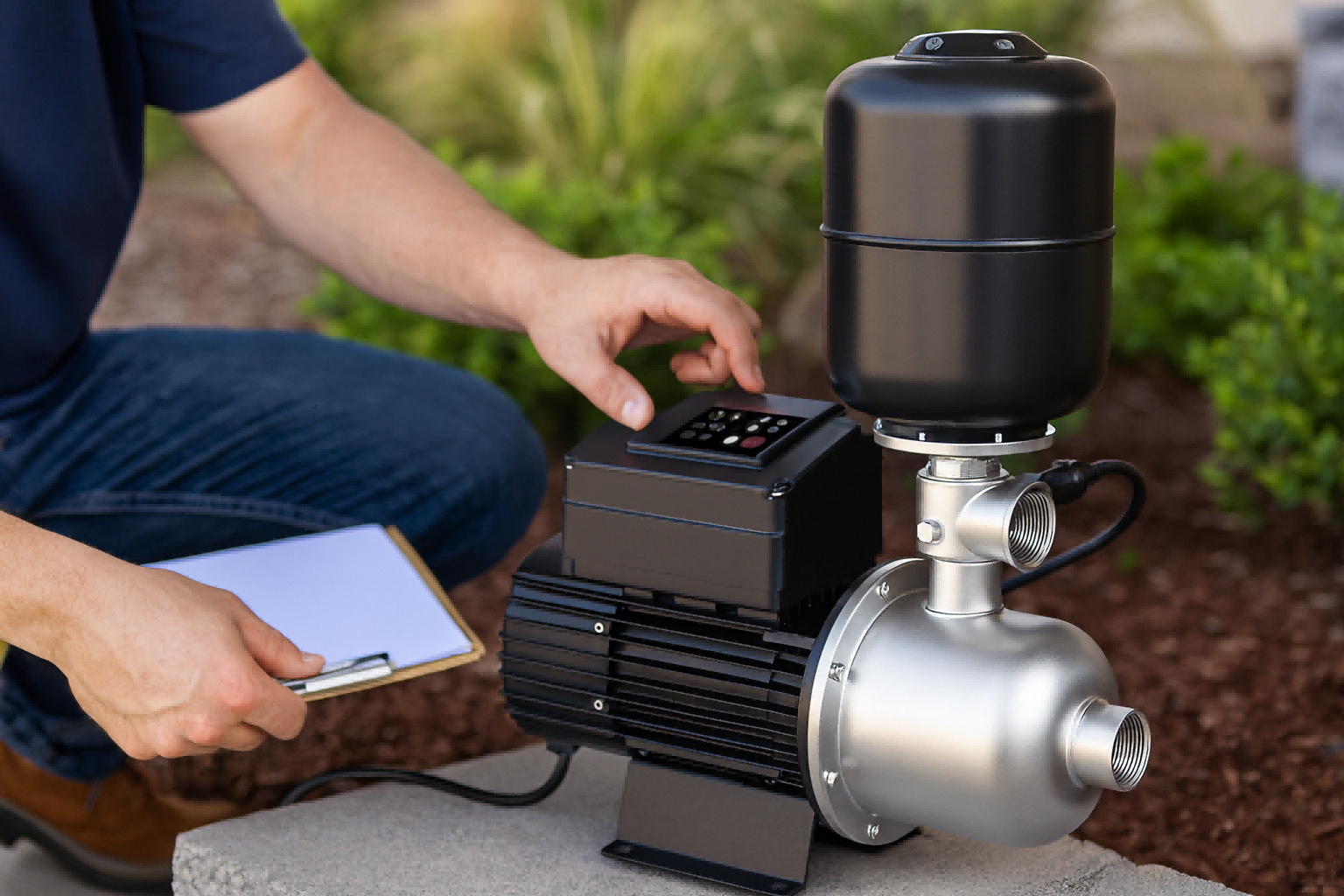
That price range is wide.
It can feel overwhelming.
To find the right pump for your customers, you need to examine the details.
This knowledge will help you stock the most profitable inventory.
Let's break down the factors that determine the final cost of an irrigation pump.
This guide will empower you to make informed purchasing decisions for your business.
What Are the Main Types of Irrigation Pumps and Their Costs?
Choosing the wrong pump type causes system failure and inefficiency.
This leads to costly repairs and unhappy customers.
Knowing the main types ensures you match the right product to the right irrigation need.
The primary types are centrifugal, submersible, and turbine pumps, each with a distinct price point. Centrifugal pumps are versatile for surface water. Submersible pumps excel in deep wells. Turbine pumps are for high-volume, high-pressure tasks. Your choice directly impacts initial investment and performance.
Understanding the fundamental differences between pump types is the first step in estimating cost.
Each category is designed for specific water sources and pressure requirements.
This directly influences its construction, materials, and ultimately, its price.
For importers and distributors, offering the right mix of these pumps is crucial for meeting diverse market demands.
Your inventory should reflect the common irrigation challenges in your region, from drawing water from a shallow pond to pulling it from a deep borehole.
Let's explore these types in more detail.
Centrifugal Pumps: The Versatile Standard
Centrifugal pumps are a common choice for many irrigation applications.
They use a spinning impeller to pull water in and push it out.
Their design is relatively simple and effective for many surface water sources.
This makes them a popular and cost-effective option for distributors to stock.
They are ideal for moving water from sources like ponds, lakes, rivers, or shallow wells.
| Feature | Surface Centrifugal Pump | Self-Priming Centrifugal Pump |
|---|---|---|
| Priming | Requires manual priming (filling the casing with water) | Primes itself automatically after initial setup |
| Placement | Must be placed below the water level or have a foot valve | Can be placed above the water source |
| Best Use | Consistent water supply, flooded suction applications | Situations where the pump might lose its prime |
| Cost | Lower | Slightly Higher |
Their versatility is a key selling point.
However, they are limited by suction lift.
They typically cannot pull water from more than 25 feet (about 7.5 meters) below the pump.
This makes them unsuitable for deep well applications.
Submersible Pumps: The Deep Water Solution
Submersible pumps are designed to be fully underwater.
The entire unit, including the sealed motor, is placed directly in the water source.
This design eliminates the issue of suction lift that limits centrifugal pumps.
They are the go-to solution for deep wells and boreholes.
Because they are submerged, they push water to the surface rather than pulling it.
This is a much more efficient method for deep water extraction.
The cost of submersible pumps is generally higher than centrifugal pumps.
This is due totheir more complex, sealed construction and the durable materials required, like stainless steel.
These materials are necessary to prevent corrosion and ensure a long service life underwater.
Turbine Pumps: The High-Volume Powerhouse
Turbine pumps are built for large-scale, high-pressure irrigation.
They are often used in commercial agriculture and municipal water systems.
These pumps use a series of stacked impellers (stages) to build very high pressure.
This makes them capable of moving massive volumes of water over long distances or to high elevations.
Vertical turbine pumps are a common configuration.
The motor is above ground, connected by a long shaft to the pump assembly submerged in the water.
Due to their size, power, and complexity, turbine pumps are the most expensive option.
They represent a significant capital investment.
They are intended for operations where high flow rates and high head are non-negotiable requirements.
How Do Power and Flow Rate Affect Pump Prices?
Picking a pump with the wrong power rating leads to poor performance.
It either fails to deliver enough water or wastes massive amounts of electricity.
Matching pump power to system needs is key for efficiency and customer satisfaction.
A pump's price increases directly with its power (horsepower or kilowatts) and flow rate (gallons per minute or cubic meters per hour). Higher power and flow capabilities require larger motors and more robust components, leading to a higher initial cost for the unit.
Power and flow rate are two of the most significant factors determining an irrigation pump's cost.
They define the pump's capacity to do work.
A pump that can move more water faster will always command a higher price.
As a distributor, understanding this relationship is vital for advising your clients.
You need to help them balance their performance needs with their budget.
Buying a pump that is too powerful is just as bad as buying one that is too weak.
An oversized pump leads to wasted energy and can damage the irrigation system through excessive pressure.
Let’s examine how these two intertwined specifications influence the final price tag.
Understanding Horsepower (HP) and Kilowatts (kW)
Horsepower (HP) or kilowatts (kW) measures the power of the pump's motor.
It is the force that drives the pump's internal mechanics.
Greater horsepower allows the pump to move water against more resistance.
This resistance is known as Total Dynamic Head (TDH).
TDH includes the vertical distance the water is lifted, the friction loss in the pipes, and the pressure required at the outlet.
A higher HP or kW rating means a more powerful, and thus more expensive, motor.
| Power Rating | Typical Application | Relative Cost |
|---|---|---|
| < 1 HP | Small gardens, residential sprinklers | Low |
| 1 - 5 HP | Small farms, large residential, commercial landscapes | Medium |
| 5 - 25 HP | Medium-sized farms, athletic fields | High |
| > 25 HP | Large-scale commercial agriculture | Very High |
Selecting the correct horsepower is a critical calculation.
Underpowering a pump means it won't deliver the required water pressure.
Overpowering it leads to significant energy waste and a higher upfront cost.
Flow Rate: Gallons Per Minute (GPM) or Cubic Meters per Hour (m³/h)
Flow rate measures the volume of water a pump can move in a given amount of time.
It's commonly expressed in gallons per minute (GPM) or cubic meters per hour (m³/h).
The required flow rate is determined by the size of the area being irrigated and the type of irrigation system used.
For example, drip irrigation systems require a much lower flow rate than pivot irrigation systems.
A pump with a higher flow rate capability needs a larger pump casing and impeller.
It also requires a more powerful motor to handle the larger volume of water.
These larger components and the increased engineering complexity directly result in a higher price.
When advising a client, you must first determine their required flow rate.
This is calculated based on the total water needs of their crops or landscape during peak times.
Only then can you recommend a pump with the appropriate capacity.
This ensures the system operates efficiently without being over-engineered.
Why is VSD Technology a Game-Changer for Cost Savings?
Traditional pumps run at one speed, wasting enormous amounts of energy.
This constant full-power operation leads to high electricity bills and mechanical stress.
Smart VSD technology offers a solution that cuts costs and improves performance.
Variable Speed Drive (VSD) pumps automatically adjust motor speed to match real-time water demand. While the initial cost is higher than fixed-speed pumps, VSD technology can reduce electricity consumption by up to 50%, offering a rapid return on investment and a much lower total cost of ownership.
The conversation about pump cost must include the total cost of ownership, not just the purchase price.
This is where Variable Speed Drive (VSD) technology becomes essential.
For B2B customers like importers and distributors, VSD pumps are a high-value product.
They offer a clear competitive advantage and a powerful story of long-term savings.
Traditional pumps operate on a simple on/off principle.
They run at 100% capacity whenever they are switched on, regardless of the actual demand.
This is like driving your car with the accelerator always pushed to the floor.
VSD technology changes this outdated model completely.
The Problem with Fixed-Speed Pumps
Fixed-speed pumps are designed for a single "worst-case scenario" duty point.
This means they are sized to provide maximum required flow and pressure.
However, an irrigation system rarely requires this peak output 100% of the time.
Most of the time, the demand is much lower.
When a fixed-speed pump operates below its peak design point, it becomes highly inefficient.
The excess energy is wasted as heat, noise, and vibration.
This leads to several problems:
- High Energy Bills: The pump consumes maximum power even when only minimal flow is needed.
- Mechanical Stress: Constant hard starts and stops wear out the motor, bearings, and seals.
- System Damage: Excess pressure can cause leaks, burst pipes, and damage to sprinkler heads.
How VSD Technology Provides the Solution
A Variable Speed Drive, or inverter, is an intelligent controller connected to the pump motor.
It measures system pressure in real-time.
It then adjusts the motor's rotational speed (RPM) to precisely match the water demand.
If a user opens only one tap, the VSD pump runs slowly, using minimal energy.
If multiple irrigation zones are activated, the pump speeds up to maintain constant pressure.
This intelligent modulation is the key to massive energy savings.
Calculating the Return on Investment (ROI)
The upfront cost of a VSD booster pump is higher than a comparable fixed-speed model.
This is a key consideration for any buyer.
However, the discussion must pivot to the ROI.
The energy savings are often so substantial that the initial price difference is recovered quickly.
Here is a simplified breakdown of the value proposition:
| Cost Factor | Fixed-Speed Pump | VSD Booster Pump |
|---|---|---|
| Initial Cost | Lower | Higher |
| Energy Consumption | High and Constant | Low and Variable (up to 50% less) |
| Maintenance Costs | Higher (due to wear and tear) | Lower (soft starts reduce stress) |
| Pump Lifespan | Shorter | Longer |
| Total Cost of Ownership | High | Low |
For your B2B customers, this table is a powerful sales tool.
It shifts the focus from a simple price comparison to a smarter, long-term investment strategy.
Promoting VSD pumps positions you as a forward-thinking supplier focused on your customers' profitability.
Which Other Factors Influence the Final Pump Price?
Focusing only on pump type and power can lead to a bad purchase.
Ignoring material quality or brand reputation can result in frequent failures and high replacement costs.
A holistic view of all cost factors is essential for a smart, durable investment.
Beyond the core specs, factors like construction materials (stainless steel vs. cast iron), brand reputation, warranty, and certifications all impact the price. Premium materials and trusted brands cost more upfront but deliver superior reliability, efficiency, and a lower total cost of ownership.
The price of an irrigation pump is a complex puzzle.
Type, power, and VSD technology are major pieces.
But several other critical factors contribute to the final cost.
As a distributor, understanding these nuances allows you to justify the value of premium products.
It helps your customers see beyond the initial price tag.
They can then appreciate the long-term benefits of a well-made pump.
A cheap pump that fails quickly is far more expensive than a reliable one that costs more upfront.
Let's break down these additional but crucial cost influencers.
Material of Construction
The materials used to build a pump are a major cost driver.
They also determine the pump's lifespan and suitability for different water types.
Cast Iron: This is a common and cost-effective material. It is durable and suitable for clean, non-corrosive water. However, it is heavy and will rust over time, especially with hard or chemically treated water.
Stainless Steel: This is a premium material. It offers excellent resistance to corrosion and rust. It is ideal for handling hard water, acidic water, or water with chemical additives. Pumps made from stainless steel are more expensive but last much longer in harsh conditions.
Bronze/Brass: These materials are often used for impellers. They provide good corrosion resistance and are softer than stainless steel, reducing wear on the pump casing.
Engineered Plastics: High-grade plastics are used in some smaller pumps or components. They are lightweight and completely resistant to corrosion but may not offer the same durability as metal under high pressure.
The choice of material should match the water quality of the application.
For your clients, selling a stainless steel pump for a hard water area is providing a real solution, not just a product.
Brand Reputation and Warranty
Established brands often command higher prices.
This premium is not just for the name.
It represents years of research and development, consistent quality control, and proven reliability in the field.
A reputable brand like Rafsun invests heavily in:
- R&D: Developing more efficient and reliable pump technology, like our permanent magnet VSD systems.
- Quality Control: Implementing rigorous testing protocols (IQC, LQC, PQC, OQA) to ensure every unit meets high standards.
- After-Sales Support: Providing strong warranties and technical support, giving buyers peace of mind.
A longer and more comprehensive warranty is a sign of the manufacturer's confidence in their product.
It is a form of insurance for the buyer.
A cheaper pump with a 90-day warranty is a risk.
A premium pump with a 2-year warranty is an investment.
Certifications and Compliance
Certifications ensure that a pump meets specific safety, quality, and performance standards.
Obtaining these certifications is a costly process for manufacturers.
This cost is reflected in the final product price.
Key certifications include:
- CE: Confirms the product meets EU safety, health, and environmental protection requirements.
- RoHS: Restricts the use of specific hazardous materials in electrical and electronic products.
- IEC: Relates to international standards for all electrical, electronic, and related technologies.
Pumps with these certifications offer an assurance of quality and safety.
For importers, they are often a mandatory requirement for bringing products into their markets.
Selling certified products protects your business and your customers.
How to Choose the Right Pump for Your Business Needs?
Choosing a pump based on price alone often backfires.
This can lead to stocking inefficient, unreliable products that damage your reputation.
A strategic selection process based on total value is the key to long-term success.
To choose the right pump, first analyze your target market's needs, focusing on water source and system size. Then, prioritize total cost of ownership over initial price by selecting VSD models. Finally, partner with a reliable manufacturer who offers quality, support, and a strong warranty.
Making the right purchasing decision is about more than just finding the lowest price.
It's about building a profitable and sustainable business.
For a B2B buyer like an importer or distributor, the pumps you choose to stock are a direct reflection of your brand.
Offering cheap, unreliable products leads to customer complaints, costly returns, and a damaged reputation.
Offering high-value, efficient, and reliable products builds trust and customer loyalty.
This fosters repeat business and positive word-of-mouth.
Let's outline a strategic approach to selecting the right pumps for your inventory.
Step 1: Analyze Your Market's Needs
Before you can choose the right pump, you must understand your customers.
What are their primary irrigation challenges?
Consider the following questions:
- What are the common water sources? Are your customers drawing from deep wells, rivers, lakes, or municipal supplies? This determines the need for submersible vs. centrifugal pumps.
- What is the typical scale of operation? Are you serving small farms, large agricultural corporations, or residential landscapers? This dictates the required flow rates and power.
- What is the water quality like? Is hard water or corrosive water a common problem? This will guide your choice of materials (e.g., stainless steel over cast iron).
- Are energy costs a major concern? In markets with high electricity prices, the demand for energy-efficient VSD pumps will be strong.
By answering these questions, you can create a profile of your ideal pump inventory.
Step 2: Prioritize Total Cost of Ownership (TCO)
The most successful distributors teach their customers to look beyond the initial price.
You must do the same in your own purchasing.
Evaluate potential pumps based on their Total Cost of Ownership (TCO).
TCO = Initial Purchase Price + Lifetime Energy Costs + Lifetime Maintenance Costs
A pump with a higher initial price but significantly lower energy and maintenance costs (like a VSD pump) will have a much lower TCO.
This is the most compelling value proposition you can offer your clients.
It shows that you are invested in their long-term profitability, not just making a quick sale.
Step 3: Partner with a Reliable Manufacturer
Your choice of supplier is as important as your choice of product.
A strong manufacturing partner is a cornerstone of your business.
Look for a manufacturer that offers more than just a low price.
Key attributes of a great partner include:
| Attribute | Why It Matters for Your Business |
|---|---|
| Technical Innovation | Access to leading-edge technology (like VSD) keeps your product line competitive. |
| Robust Quality Control | Reduces the rate of defective products, saving you time and money on returns. |
| Comprehensive Certifications | Ensures products are compliant with your market's regulations and guarantees a standard of safety. |
| OEM/ODM Capability | Allows you to build your own brand identity and control your market position. |
| Strong Warranty & Support | Provides a safety net and shows the manufacturer stands behind their products. |
| Proven Track Record | A history of global distribution and positive customer reviews reduces your risk. |
A partnership with a company like Rafsun provides all of these benefits.
It ensures you are stocking products that are not only well-priced but also well-made, reliable, and technologically advanced.
This strategic approach transforms your role from a simple reseller to a trusted solutions provider.
Conclusion
The cost of an irrigation pump is complex.
It depends on type, power, materials, and technology.
Smart buyers look beyond the initial price to total ownership cost, where VSD pumps deliver unbeatable long-term value.
FAQs
How much does an irrigation pump cost?
An irrigation pump can cost from $200 for small models to over $20,000 for large systems. Price depends on type, power, materials, and smart features.
Is it cheaper to run a well for irrigation?
It can be cheaper long-term by eliminating municipal water bills. However, this requires a significant initial investment in the well, pump, and power source.
What is the most efficient irrigation pump?
Pumps with a Variable Speed Drive (VSD) are the most efficient. They adjust speed to match demand, cutting energy use by up to 50% compared to fixed-speed models.
How do I choose the right size irrigation pump?
To size a pump, you must calculate the required flow rate (GPM) and total dynamic head (pressure). It is best to consult with a professional for an accurate assessment.
How long do irrigation pumps last?
A well-maintained, high-quality pump can last 15 to 20 years. Lifespan depends on material quality, operating hours, water type, and proper maintenance. Cheaper pumps may fail sooner.
What is the difference between a booster pump and an irrigation pump?
The terms are often related. An irrigation pump moves water from a source, while a booster pump increases the pressure within an existing water line for better sprinkler performance.
Can I use a solar panel to run an irrigation pump?
Yes, solar-powered pumps are an excellent, sustainable option for off-grid irrigation. The system's cost and size depend on the pump's power requirements and daily run-time.


